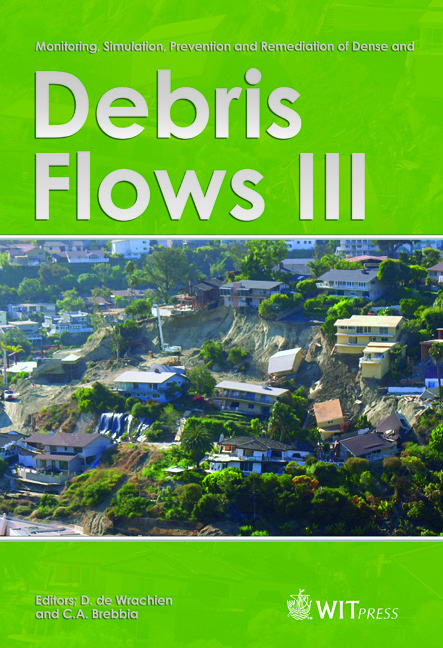Debris Flow Modelling Accounting For Large Boulder Transport
Price
Free (open access)
Transaction
Volume
67
Pages
12
Page Range
29 - 40
Published
2010
Size
689 kb
Paper DOI
10.2495/DEB100031
Copyright
WIT Press
Author(s)
C. Martinez, F. Miralles-Wilhelm & R. Garcia-Martinez
Abstract
We present a quasi three-dimensional numerical model to simulate stony debris flows, considering a continuum fluid phase of water and fine sediments, and a non-continuum phase of large particles, such as boulders. Large particles are treated in a Lagrangian frame of reference using the Discrete Element Method in three dimensions. The fluid phase is governed by the depth-averaged Navier–Stokes equations in two horizontal dimensions and is solved by the Finite Element Method. The model simulates particle-particle collisions and wall-particle collisions, taking into account that particles are immersed in the fluid. Bingham and Cross rheological models are used for the continuum phase. Both formulations provide stable results, even in the range of very low shear rates. The Bingham formulation is better able to simulate the stopping stage of the fluid. The results of the numerical simulations are compared with data from laboratory experiments on a flume-fan model. The results show that the model is capable of simulating the motion of big particles moving in the fluid flow, handling dense particulate flows that avoid overlapping among particles. An application to simulate a debris flow event that occurred in Northern Venezuela in 1999 shows that the model replicates well the main observed boulder accumulation areas. Keywords: debris flow, mud flow, boulders transport, Eulerian and Lagrangian formulation, finite element method, discrete element method.
Keywords
debris flow, mud flow, boulders transport, Eulerian and Lagrangian formulation, finite element method, discrete element method





